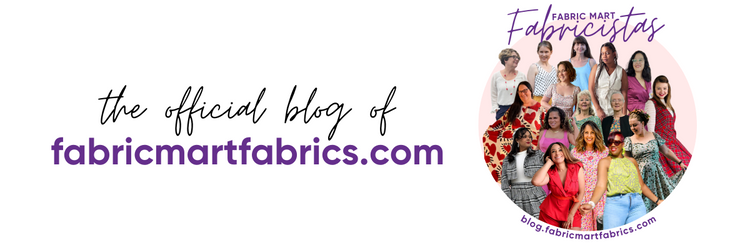I know it’s been super cold over most of the US recently and even South Florida got a cold front a few weeks go. It got so cold it snowed several inches in Orlando and Northern Florida! It was during the winter freeze that I was looking for fabric for my next make and came across this Black 100% Polyester Double Faced Faux Fur that is 64W. This fabric is so soft and luxurious to touch. More on the fabric later though, because I have some tips and tricks I learned along the way.
I knew I wanted to make a vest so I started looking through my pattern stash and I came across McCall’s M7695. This is a Palmer/Pletsch pattern that uses the Tissue Fitting Method. I honestly didn’t use the method. I just looked at the measurements and decided on making the size 22 because I wanted the vest to be oversized. This pattern comes with 4 different views. The view I chose to make was View C with a minor adjustment. I chose to omit using the zipper and just followed the pattern instructions to sew it up.
The vest was not hard to sew up, but I would like to say that sewing fur is NOT for the weak of heart. I had/have fur everywhere! I’ve seen people trace out the pattern piece on the wrong side of the fabric and put tape down on where you are going to cut which helps the fur from going everywhere, but I did not have a choice. The wrong side of the fabric had a lot of fur that was just falling off everywhere. I did not pre-treat my fabric and I’m thinking if I had, it might have helped with the situation. Another tip for sewing fur is to use a walking foot on the sewing machine. A walking foot helps with keeping the fabric together and helps minimize puckering or the fabric shifting.
Did you know that you can get free PDF sewing patterns from Mood? Well, you can. If you go to Mood.com and search for The Bucket Hat, then you’ll find the pattern I used to make mine. I made the largest size without taking any measurements. Don’t be like me if you want your hat to not be too big. Lol I wanted a Savanna James look but instead I’m feeling a little like Tia and Tamara from Sister, Sister. IYKYK. I’m going to give you a quick and dirty tutorial of how I sewed up my hat.
You will need to cut out 1 crown of fabric, 2 side panels and 4 brims. The pattern also calls to interface the brim, but I omitted doing that. With right sides together sew 1 of the 2 pairs of brim pattern pieces at the short ends. Do that with the remaining panels. With right sides together pin the two brim pieces together and sew around the outside edge of the brim and turn it right sides out when done and put it aside.
With right sides together, pin and sew the side panels together along the seams. Once you have done that, take your crown piece and pin it to the side panels opening along the top and sew around the circle. Place the top part of the bucket hat inside of the brim, right sides together and sew. Now you have a bucket hat!
I hope you guys enjoyed my fur vest and bucket hat. When I’m not guest blogging on the Fabric Mart blog, I’m usually hanging out over on my Instagram page, so make sure you follow me over there!
Until next time.
JOHANNA | @soveryjo












Looks cute! I think it was worth the mess of sewing on fur for this one!
ReplyDeleteThe hat is a perfect compliment to the vest.
ReplyDelete